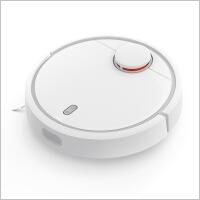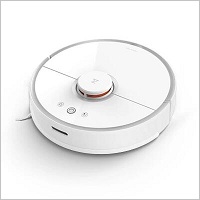Package Exports
- homebridge-mi-robot_vacuum
This package does not declare an exports field, so the exports above have been automatically detected and optimized by JSPM instead. If any package subpath is missing, it is recommended to post an issue to the original package (homebridge-mi-robot_vacuum) to support the "exports" field. If that is not possible, create a JSPM override to customize the exports field for this package.
Readme
homebridge-mi-robot_vacuum
XiaoMi robot vacuum plugins for HomeBridge.
Thanks for nfarina(the author of homebridge), OpenMiHome, aholstenson(the author of miio), all other developer and testers.
Note: If you find bugs, please submit them to issues or QQ Group: 107927710.
Note: Maybe you should open the Vacuum Page in Mijia(MiHome) APP before you start HomeBridge or you will only get Timeout.


Supported Devices
1.MiRobotVacuum(小米扫地机器人)
2.MiRobotVacuum2(石米扫地机器人)
Installation
- Install HomeBridge, please follow it's README.
If you are using Raspberry Pi, please read Running-HomeBridge-on-a-Raspberry-Pi. - Make sure you can see HomeBridge in your iOS devices, if not, please go back to step 1.
- Install packages.
npm install -g homebridge-mi-robot_vacuumConfiguration
"platforms": [{
"platform": "MiRobotVacuumPlatform",
"deviceCfgs": [{
"type": "MiRobotVacuum",
"ip": "192.168.88.xx",
"token": "xxxxxxxxxxxxxxxxxxxxxxxxxxxxxxxx",
"robotVacuumName": "robot vacuum",
"enablePauseToCharge": true,
"robotVacuumDisable": false
}, {
"type": "MiRobotVacuum2",
"ip": "192.168.88.xx",
"token": "xxxxxxxxxxxxxxxxxxxxxxxxxxxxxxxx",
"robotVacuumName": "robot vacuum 2",
"enablePauseToCharge": true,
"robotVacuumDisable": false
}]
}]Get token
Get token by miio2.db
setup MiJia(MiHome) app in your android device or android virtual machine.
open MiJia(MiHome) app and login your account.
refresh device list and make sure device display in the device list.
get miio2.db(path: /data/data/com.xiaomi.smarthome/databases/miio2.db) file from your android device or android virtual machine.
open website [Get MiIo Tokens By DataBase File], upload miio2.db file and submit.
Get token by network
Open command prompt or terminal. Run following command:
miio --discoverWait until you get output similar to this:
Device ID: xxxxxxxx
Model info: Unknown
Address: 192.168.88.xx
Token: xxxxxxxxxxxxxxxxxxxxxxxxxxxxxxxx via auto-token
Support: Unknown "xxxxxxxxxxxxxxxxxxxxxxxxxxxxxxxx" is token.
If token is "???", then reset device and connect device created Wi-Fi hotspot.
Run following command:
miio --discover --syncWait until you get output.
For more information about token, please refer to OpenMiHome and miio.
Version Logs
0.1.3 (2018-04-18)
1.adaptation firmware version: 3.3.9_003194.
0.1.2 (2018-02-10)
1.update 'package.json'.
0.1.1 (2017-11-19)
1.fixed bug that XiaoMi robot vacuum 2 can't work.
0.1.0 (2017-11-18)
1.support for XiaoMi robot vacuum 2.
0.0.3 (2017-11-18)
1.modify class name, reduce the probability of conflicts due to the same class name and other plugins.
0.0.2 (2017-09-11)
1.optimized code.
0.0.1 (2017-09-10)
1.support for XiaoMi robot vacuum.